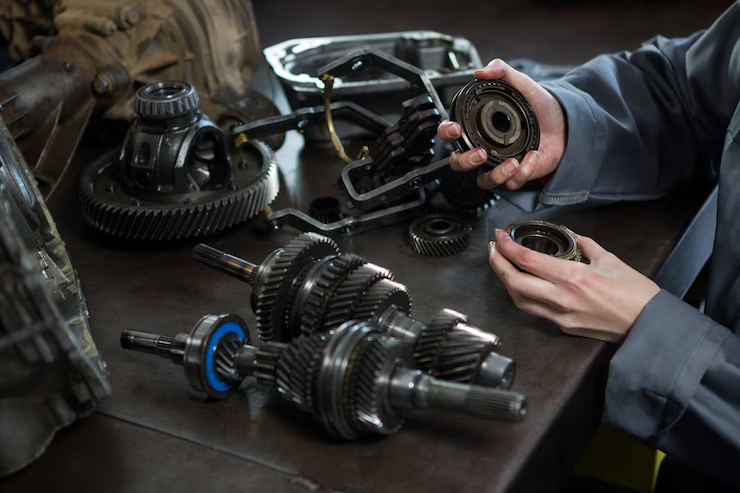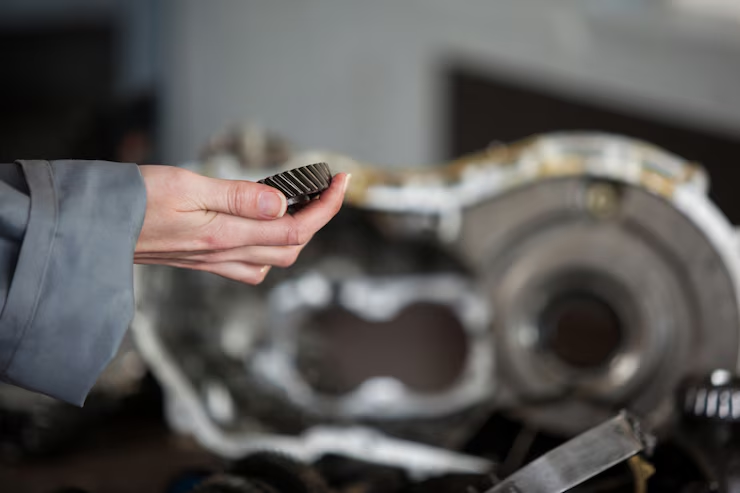Introduction
The clutch plate is a critical component in manual transmission vehicles. It acts as a bridge between the engine and the transmission system, allowing you to change gears smoothly. But like all mechanical parts, clutch plates are subject to wear and tear—and if ignored, they can cause serious issues or complete vehicle breakdowns.In this article, we’ll explore the common signs of clutch plate problems, their causes, and practical solutions to keep your car running smoothly.

What Is a Clutch Plate?
The clutch plate (or friction plate) is part of the clutch assembly. It sits between the flywheel and the pressure plate and is responsible for transmitting engine power to the gearbox when the clutch is engaged.Over time, due to frequent use—especially in traffic-heavy conditions—this plate can wear out or get damaged, leading to performance problems.
Common Signs of a Failing Clutch Plate
Symptoms: Engine revs increase, but the vehicle doesn’t accelerate accordingly.
Cause: Worn-out clutch plate can’t grip the flywheel properly.
Effect: Reduced fuel efficiency and power loss.
Difficulty in Shifting Gears
Symptoms: Resistance or grinding noise while changing gears.
Cause: Worn clutch lining or misalignment in clutch components.
Effect: Stress on the gearbox and potential long-term transmission damage.
Burning Smell
Symptoms: Sharp, pungent odor while driving (especially uphill or in traffic).
Cause: Friction from slipping clutch generates excess heat.
Effect: Indicates excessive wear; clutch may fail soon.
Unusual Noises
Symptoms: Rattling, grinding, or squealing sounds when pressing the clutch.
Cause: Faulty clutch plate or release bearing.
Effect: Driving becomes uncomfortable and potentially dangerous.
Poor Acceleration
Symptoms: Delayed or weak response when pressing the accelerator.
Cause: Slipping or partially engaged clutch.
Effect: Loss of control and drivability.
Clutch Pedal Feels Soft or Spongy
Symptoms: Clutch pedal has little resistance or sinks to the floor.
Cause: Worn pressure plate or hydraulic leak in clutch system.
Effect: Ineffective gear changes and unsafe driving.
Causes of Clutch Plate Damage
Aggressive Driving: Rapid acceleration, “riding the clutch,” and frequent gear changes.
Frequent Stop-and-Go Traffic: Increases friction and heat buildup.
Improper Gear Usage: Using high gear at low speeds puts strain on the clutch.
Overloading Vehicle: Extra weight increases load on the drivetrain.
Age and Mileage: Natural wear over time; usually lasts 40,000–100,000 km.
Solutions and Repairs
When needed: If the plate is excessively worn or damaged.
Cost: Varies by vehicle type, but a full clutch kit (plate, pressure plate, bearing) is often replaced together for best results.
Adjust Clutch Cable or Hydraulic System
For: Soft or sticky clutch pedal issues.
How: Adjusting the cable tension or bleeding the clutch fluid.
Check for Oil Leaks
Oil leaking onto the clutch plate (from the engine or gearbox) can cause slippage.
Fix the leak and replace the contaminated clutch plate.
Flywheel Resurfacing
If the flywheel surface is uneven, it may reduce friction.
Resurfacing or replacing it ensures proper clutch contact.
Tips to Extend Clutch Life
Avoid Riding the Clutch: Don’t keep your foot on the pedal unnecessarily.
Use Handbrake on Slopes: Prevents clutch slippage during hill starts.
Change Gears Smoothly: Don’t rush or force gear changes.
Avoid Overloading: Stick to the recommended load capacity.
Regular Maintenance: Periodic inspections by a mechanic can prevent major issues.
When to See a Mechanic
If you notice any of the warning signs—especially clutch slippage, burning smells, or difficulty shifting—it’s best to consult a trusted mechanic immediately. Ignoring these symptoms could lead to damage to your transmission system, which is significantly more expensive to repair.

Conclusion:
Clutch plate issues are a common but often overlooked aspect of car maintenance. Recognizing the early signs can save you from expensive repairs and sudden breakdowns. With mindful driving habits and timely maintenance, you can extend the life of your clutch system and enjoy a smoother, safer drive.Remember: The clutch isn’t just a pedal—it’s a precision system that deserves your attention.

